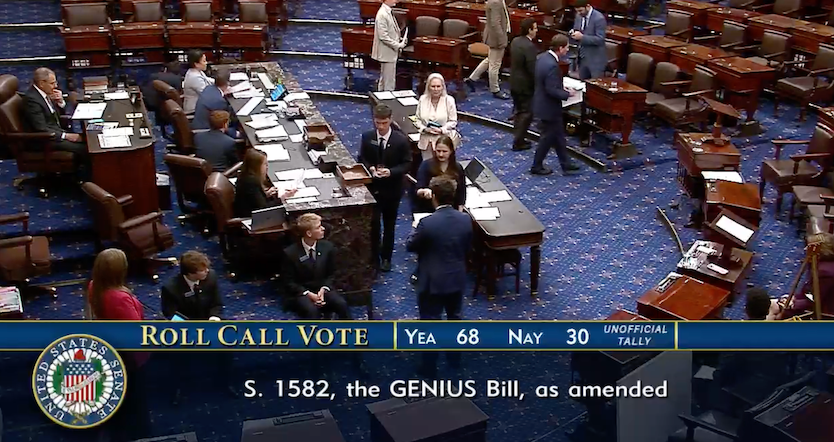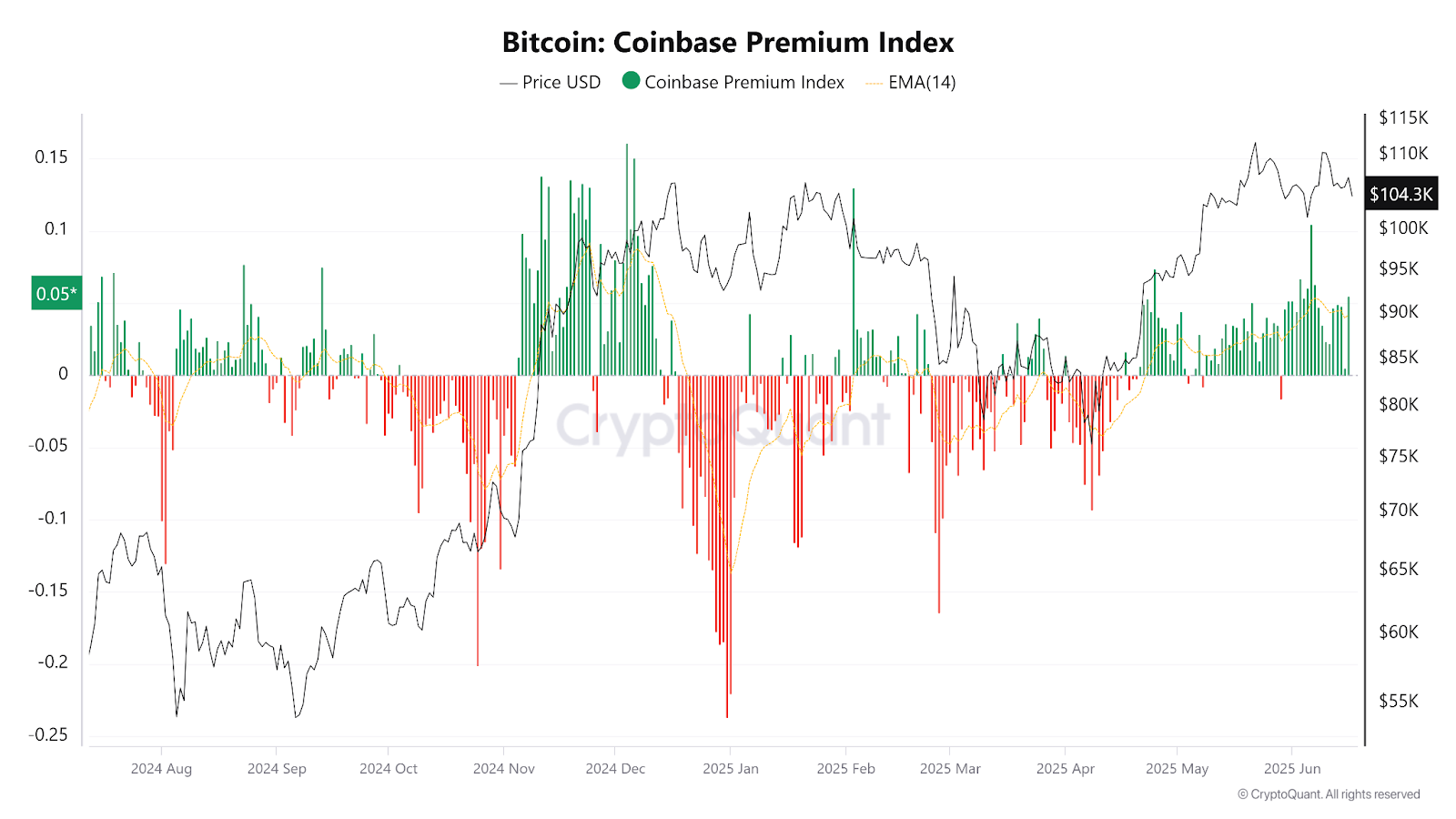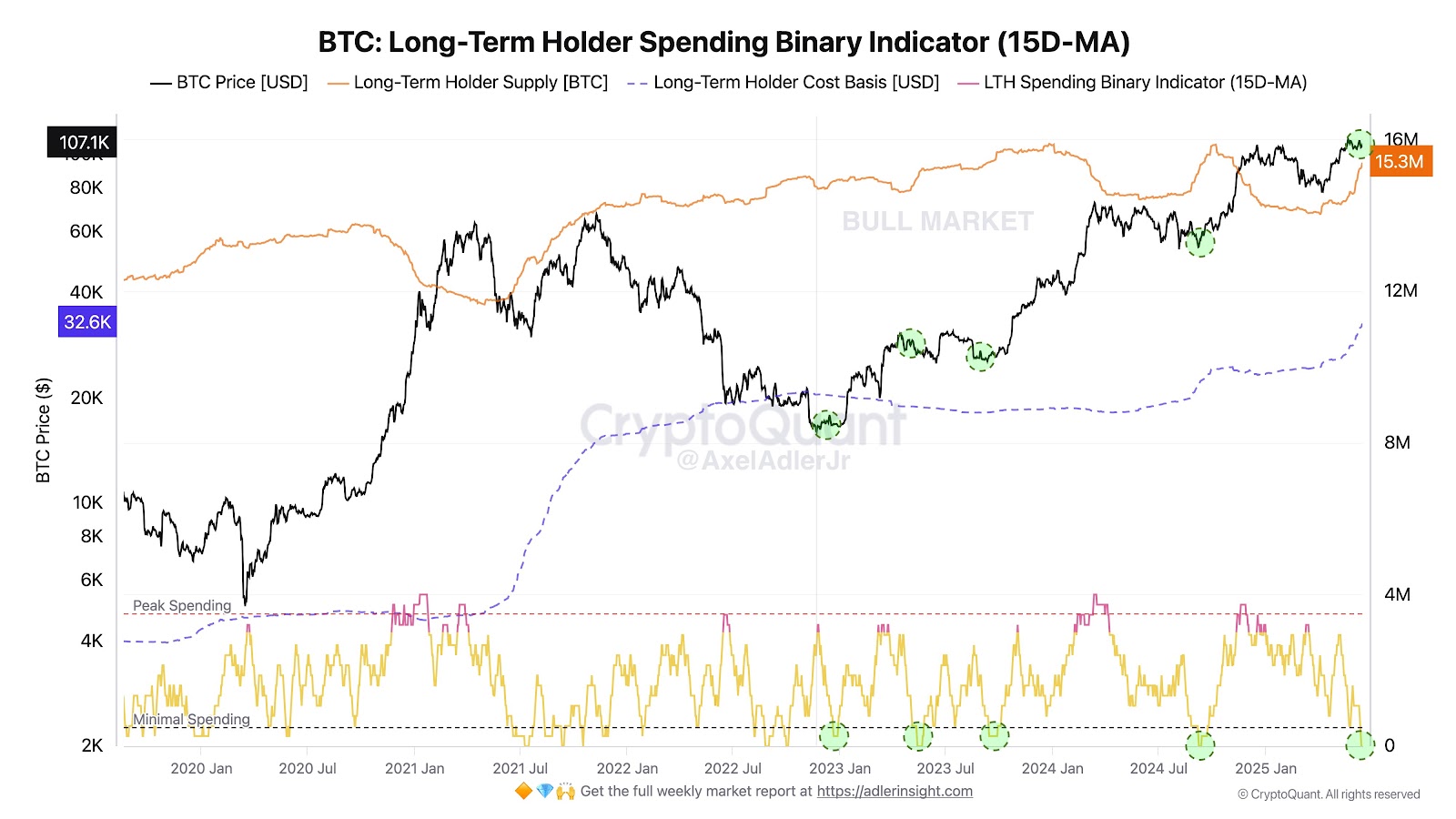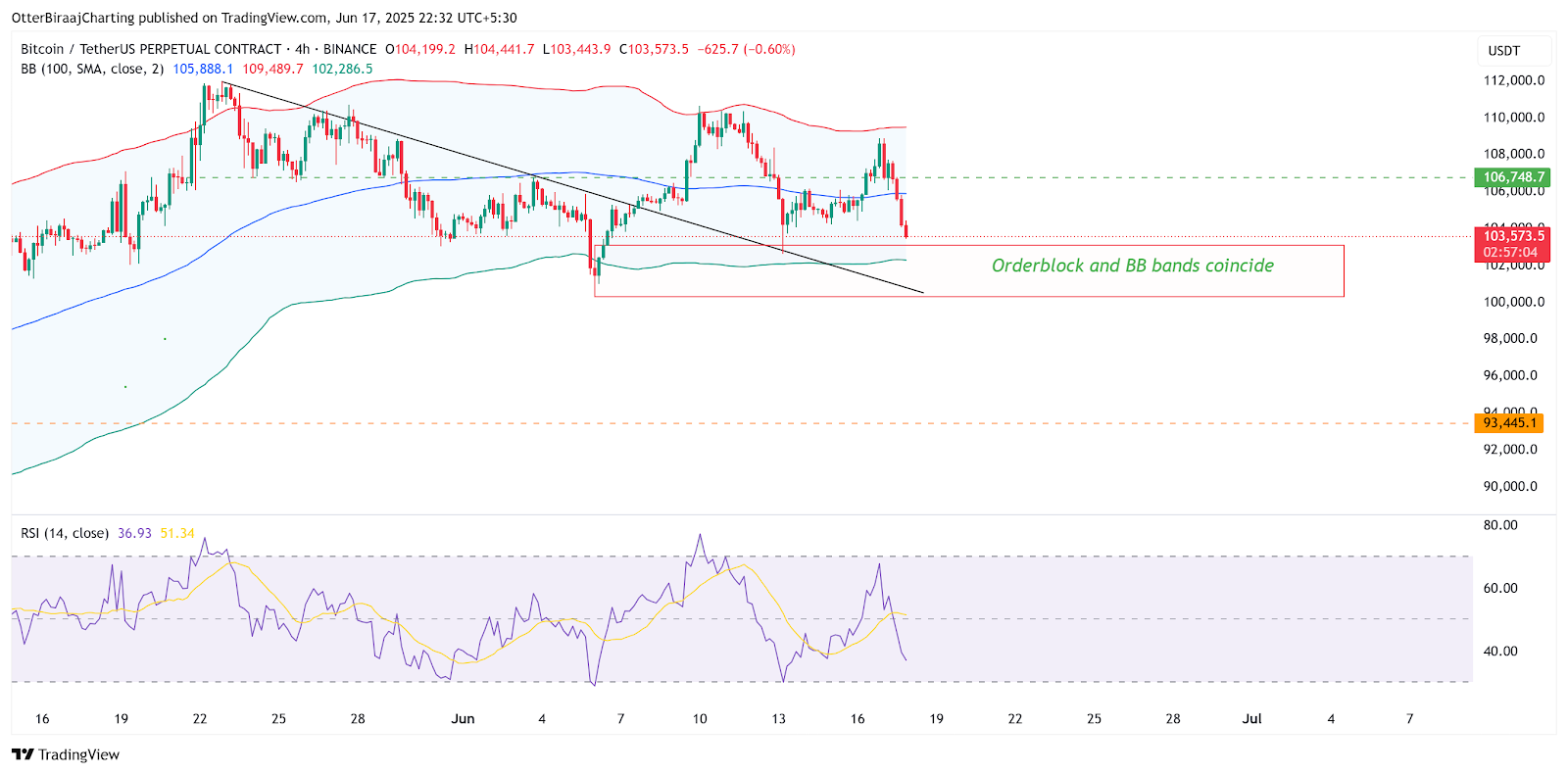I. Legislative Gambling: From Political Whirlpool to Financial Revolution

Source:US Senate
In June 2025, the US Senate passed the Guiding and Establishing National Stablecoin Innovation Act (GENIUS Act) with a vote of 68 to 30, ending a six-week political battle that not only resolved the dispute between the Trump family and global free financial stablecoins but also marked a historic step in cryptocurrency regulation. The core goal of the bill directly targets the compliance and mainstreaming of stablecoins - requiring all payment stablecoins to be fully backed by 1:1 high-liquidity assets (such as US dollar cash, short-term US Treasury bonds) and prohibiting tech giants and personal leaders (like Musk, Trump family) from directly issuing stablecoins. This clause is seen as a targeted response to the USD1 stablecoin issued by the Trump family's company in March 2025 and quells the Democratic Party's accusations of "crypto corruption".
The passage of the bill was not smooth. As early as the cloture vote in early May, the bill was temporarily shelved with a narrow disadvantage of 48:49 due to the Democratic Party's strong questioning of the Trump administration's connection with the crypto industry. However, as the two parties reached a compromise on clauses such as "anti-money laundering compliance" and "consumer bankruptcy protection", the revised bill ultimately won the support of 16 Democratic Party legislators, highlighting the bipartisan consensus on crypto issues. Senator Bill Hagerty from Tennessee defined the GENIUS Act as "the cornerstone of the US regaining leadership in financial technology" before the vote, and Treasury Secretary Scott Besant even predicted that it would catalyze the stablecoin market to exceed $3.7 trillion.
II. Regulatory Paradigm: Digital Extension of US Dollar Hegemony
The deep logic of the GENIUS Act is a strategic projection of US dollar hegemony in the digital era. By forcing stablecoin issuers to hold US Treasury bonds as reserve assets, the bill cleverly transforms global stablecoin demand into rigid purchasing power for US government bonds. According to Matt Hougan, Chief Investment Officer of Bitwise, if the bill is fully implemented, the US Treasury bond holdings of stablecoin issuers alone could reach trillions of dollars, alleviating the US debt crisis while strengthening the US dollar's international settlement status. This "overt strategy" design echoes the Stablecoin Regulation passed in Hong Kong on the same day, jointly constructing a new global digital financial order anchored by fiat currency credit.
However, the cost of the bill cannot be ignored. The comprehensive ban on algorithmic stablecoins (such as the TerraUSD model) and suppression of DeFi interest-bearing protocols force innovative projects like Ethena to face survival challenges. The "dual-track" regulatory framework - state-level regulation for institutions under $10 billion and federal jurisdiction above - while balancing flexibility and risk prevention, may exacerbate market monopoly, making well-capitalized institutions like Circle the biggest winners, while small and medium-sized financial technology companies fade out under the heavy pressure of compliance costs.
III. Bitcoin Narrative: From Hedge Tool to Value Beacon
While Washington is immersed in legislative victory, the Bitcoin market is experiencing a textbook cycle shock.
Ahead of the upcoming Federal Open Market Committee (FOMC) meeting and Wednesday's interest rate resolution, traders began reducing risk, with Bitcoin price dropping to $103,300. This pullback occurred after a weekly chart closing bearish, suggesting a trend reversal, with geopolitical tensions - especially the Israel-Iran conflict - intensifying risk-averse sentiment.
According to the market pulse aggregator supported by SwissblockBitcoin Vector, the Bitcoin price drop is not solely driven by macro factors. It aligns with seasonal weakness and on-chain network growth slowdown, indicating cooling spot demand. Over the past day, more than $434 million in Bitcoin futures were liquidated, highlighting that the current trend is primarily leverage-driven, with traders choosing to be cautious rather than take new exposures.
Nevertheless, the CoinbaseBitcoin Premium Index(a metric comparing BTC prices on Coinbase and Binance platforms) has remained positive for most of June, indicating stable spot demand from US investors. However, due to overall market caution, this demand has limited impact on price.

Bitcoin Coinbase Premium Index. Source: CryptoQuant
Further pressure comes from profit-taking activities by "medium-term holders" (6-12 months), who, according to glassnode, realized $904 million in profits on Monday. These holders account for 83% of total realized gains, showing a significant change compared to previously leading long-term holders (those holding over 12 months). This shift indicates that market dynamics are rotating, with more passive participants taking profits at recent highs.
Despite this, long-term investors' behavior still presents an optimistic outlook. Bitcoin researcher Axel Adler Jr.notedthat long-term holders (LTH) are still avoiding large-scale spending, which historically is a bullish pattern.
 Bitcoin: Long-Term Holder Spend Binary Indicator. Source: Axel Adler Jr/X
Bitcoin: Long-Term Holder Spend Binary Indicator. Source: Axel Adler Jr/X
A healthy MVRV Z-score (indicating BTC is still fundamentally undervalued) and positive Coin Days Destroyed (CDD) momentum suggest selective profit-taking rather than panic. Similar situations in past cycles led to BTC rising 18-25% within 6-8 weeks, meaning BTC's target price could reach $130,000 by the end of the second quarter.
IV. Bitcoin's Short-Term Bottom Support is Strong
From a technical perspective, Bitcoin may be approaching a short-term bottom between $102,000 and $104,000, where dense liquidity pockets and historical sequence blocks intersect.
The Bollinger Bands are another reason for Bitcoin's price mean reversion near $102,000. As shown in the chart, due to the proximity of the Bollinger Bands' middle line (around $106,000), a faster technical pullback is expected from $102,000, and the historical price movement at this level (such as the consolidation in early June) reinforces this pullback.
The Bollinger Bands are also contracting, suggesting imminent volatility surge, with the middle line near $106,000 forming a dynamic resistance. If successfully recovered and closed above $106,748, it might validate a bullish mean reversion to $112,000. Conversely, a complete break below $100,000 could invalidate the above setup, with a target price of $98,000.
 Bitcoin 4-Hour Chart. Source: Cointelegraph/TradingView
Bitcoin 4-Hour Chart. Source: Cointelegraph/TradingView
Alphractal's dataalso points out that $98,300 is a key support level for short-term holders (STH) to remain profitable. Breaking this threshold could lead to a deeper market structure pullback. As Alphractal noted:
As long as Bitcoin remains above the STH actual price, we can still consider the market bullish. Only when BTC significantly breaks below the $98,000 mark will the situation change, which could trigger a deeper decline.






